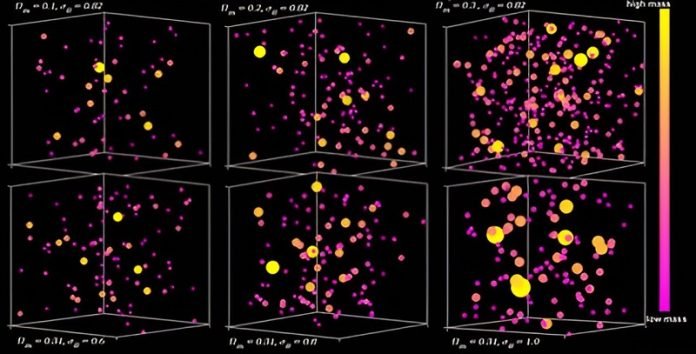
Have you ever looked up at the sky and wondered just how much ‘stuff’ is out there in the whole universe?
Scientists have been asking the same question for years. Now, an international team of researchers, including experts from Chiba University in Japan, think they’ve got a better answer.
According to their study published in The Astrophysical Journal, they’ve found that matter—like stars, planets, and everything on Earth—makes up about 31% of everything that exists in the universe.
The rest is something mysterious called dark energy.
What do we mean by “Matter”?
When we talk about ‘matter,’ we mean anything you can touch or see—like stars, galaxies, and even you and me!
Dr. Mohamed Abdullah, one of the main researchers, says that this kind of normal matter only makes up about 20% of all matter in the universe.
The other 80% is something strange called ‘dark matter.’ We can’t see or touch dark matter, and scientists are still trying to figure out exactly what it is.
How did scientists measure this?
Measuring the whole universe isn’t easy, especially when so much of it is made of things we can’t see, like dark matter.
So, how did the scientists do it?
They looked at galaxy clusters. These are big groups of galaxies stuck together by gravity. Gillian Wilson, another scientist on the team, said that the number of these galaxy clusters can give clues about how much matter there is in the universe.
The Clever Trick
Since dark matter is invisible, the researchers had to get creative to figure out how much ‘stuff’ is in each galaxy cluster.
They counted the number of galaxies because more galaxies usually mean more matter, including the invisible dark matter. They used data from the Sloan Digital Sky Survey to count the galaxies in each cluster and used that info to estimate the total matter in the cluster.
What’s cool about this study is that their finding matched up with another totally different way of measuring matter in the universe, using something called the cosmic microwave background (CMB). Tomoaki Ishiyama from Chiba University said that the two methods agreeing so well is a big deal. It shows that looking at galaxy clusters can be a reliable way to learn about the universe.
Understanding how much matter there is in the universe helps scientists make sense of a lot of other things, like how the universe began and how it might change in the future.
This study is special because it used a more accurate method to measure the distance to each galaxy cluster, which made their results more reliable.
In the future, even more powerful telescopes, like the James Webb Space Telescope, could use this method to give us an even clearer picture of the universe.
So, the next time you look up at the night sky and wonder about all the ‘stuff’ out there, remember: scientists are getting closer to understanding just how much there is—and it’s about 31%!
Follow us on Twitter for more articles about this topic.



